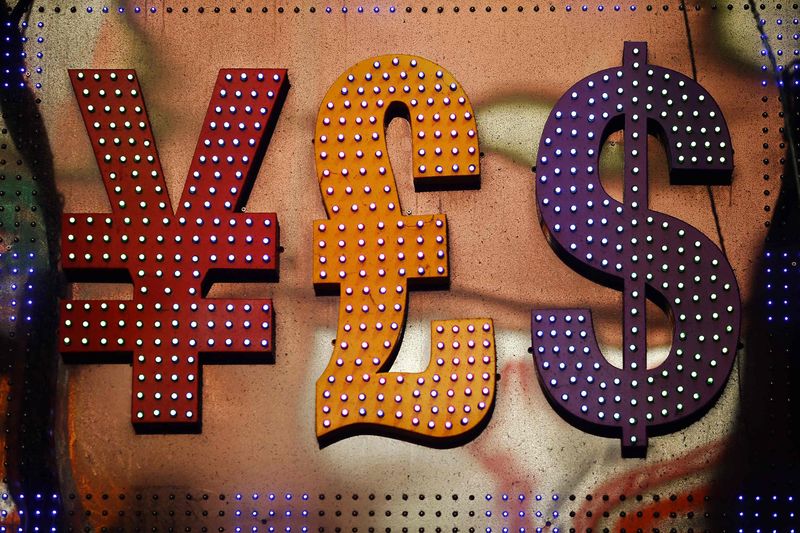On Monday (November 21), spot gold fell for the fourth consecutive trading day, hitting a one-and-a-half-week low of $1,736.88 an ounce, as the U.S. dollar index rebounded for the third consecutive trading day, hitting a six-day high of 107.903. Investors awaited the minutes of the upcoming Fed meeting for any hints about the outlook for interest rates.
At 19:39 Beijing time, spot gold fell 0.54% to $1,740.08 an ounce; the main COMEX gold futures contract fell 0.72% to $1,741.7 an ounce; the U.S. dollar index rose 0.69% to 107.746.
The Fed will release the minutes of its November meeting on Wednesday (November 23).Some Fed officials have recently made hawkish remarks, and the dollar has regained its upward momentum. These remarks also poured cold water on the Fed’s short-term policy shift expectations.
Eren Sengezer of FXStreet stated:“The Fed is about to release the minutes of its October policy meeting. Gold could get a boost if the Fed confirms policymakers’ intention to opt for a modest rate hike at the last policy meeting of the year.”
“We’re not predicting a recession, but that doesn’t mean there’s no recession risk,” said Stephen Miller, director of research at UNLV’s Center for Business and Economic Research (CBER). “The hard part is how they (the Fed) try to get the economy going and keep inflation down,” without causing a recession.”
Bostic: The final interest rate level may be higher than expected
Atlanta Fed President Bostic became the latest Fed official to sound hawkish. He said on Saturday (November 19) that the Fed was prepared to “abandon” a 75 basis point rate hike at its December meeting, but expected the Fed to still raise interest rates by 0.5 percentage points.
But Bostic also pointed out that the “borrowing rate” may be higher than it currently expects, judging by the surprise performance of inflation in the past year. He will be flexible in thinking about the appropriate policy stance and pace of rate hikes. “If the economic situation develops as I expect, I think it will be necessary to increase interest rates by 75-100 basis points. I believe that implementing this level of policy rate will be sufficient to control inflation within a reasonable time frame.”
Bostic emphasized that at some point, the Fed will need to pause its rate hikes in order to fully assess the performance of the economy. Because Bostic estimated that the impact of the Fed’s rate hike may take 12 to 24 months to “fully materialize.”
Fed policymakers appeared eager to stress that while they may have been pleased with October’s lower inflation figures, the single number doesn’t tell the story and further evidence is needed to justify a slower pace of tightening. Fed policymakers may also be determined not to accept this publicly, lest the market expect too much.
Michael Langford, director of corporate consultancy AirGuide, said:“Investors remain very focused on the rate cycle, with recent statements from Fed officials reigniting bearish sentiment on ( ).”
With recent hawkish rhetoric from Fed officials, even former “dovish” figures such as San Francisco Fed President Daly, it would not be surprising if the dollar resumes its rally before the end of 2022.
U.S. may narrowly avoid recession
Fears among consumers and economists that the country had entered a recession intensified in July when news emerged that U.S. gross domestic product (GDP) contracted for the second straight quarter. The unofficial definition of a recession is two consecutive quarters of decline in gross domestic product, which some economists claim the country has entered.
While the federal government’s efforts to reduce inflation have been slow to stem rising costs, low-income consumers have been hit by sharp price increases over the past year, especially for food and fuel.
But a tight labor market benefits workers seeking new or better jobs. The job market remains strong, and the U.S. economy, which has not yet officially entered a recession, appears to be more complicated due to historically low unemployment.
Economists at Goldman Sachs expect the U.S. to narrowly avoid a recession next year as the European economy contracts, “forecasting global growth of just 1.8% in 2023 as the firmness of the U.S. economy contrasts with the recession in Europe.”
Economists at Goldman Sachs said: “The U.S. should narrowly avoid a recession as core PCE inflation slows from 5% now to 3% by the end of 2023 and unemployment rises by 0.5%. The economy is growing below potential and we currently see another 125 bps rate hike from the Fed to peak at 5-5.25%. The Fed is not expected to cut rates in 2023.”
Economists at Standard Chartered Bank expectIn the next few weeks, the dollar may see a short-term rebound. The still-strong U.S. job market and retail sales continue to point to strong economic fundamentals. Fed policymakers have also been emphasizing the need to keep raising rates for now. The dollar’s strength isn’t quite over yet. From a technical standpoint, the dollar looks oversold, while the euro and pound (the main components of the U.S. dollar index) look overbought. That raises the possibility of short-term consolidation, with the dollar likely to rebound if November labor market and inflation data unexpectedly turn up.
Kit Juckes, an economist at Societe Generale, said:“It is likely that the unwinding process before the end of the year has officially begun. The dollar is higher due to stronger U.S. economic growth, higher interest rates, and concerns about a geopolitical crisis. 2022 is almost a perfect storm in favor of the dollar.”
Spot gold looks at $1725
On the hourly chart, the price of gold ends wave III at $1786 and starts wave IV. The lower support looks at the 38.2% Fibonacci retracement of wave III at $1740 and the 50% Fibonacci retracement of $1725. The iii wave and the potential iv wave are sub-waves of the upward (i) wave that started at $1616.
